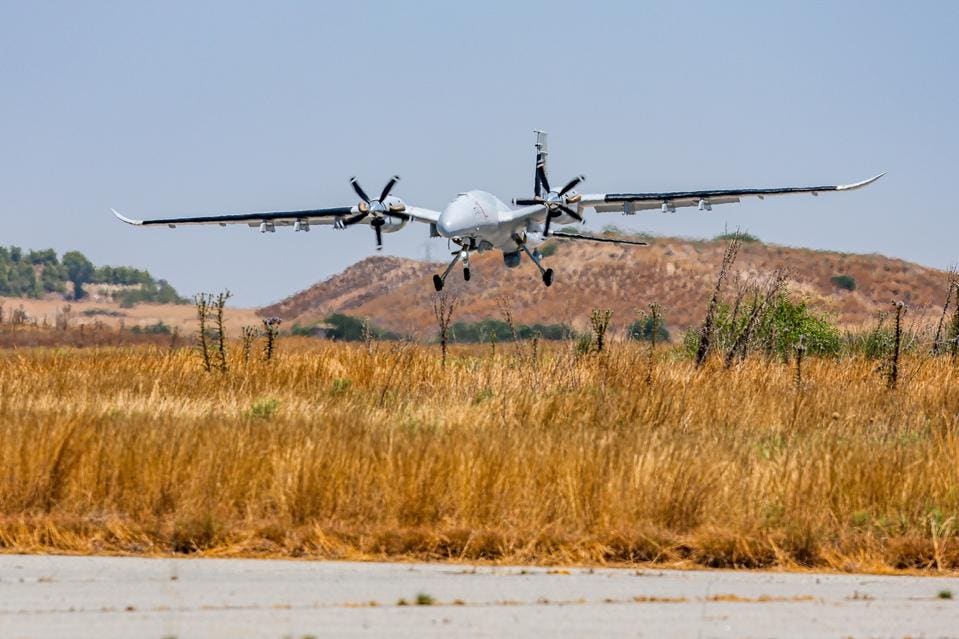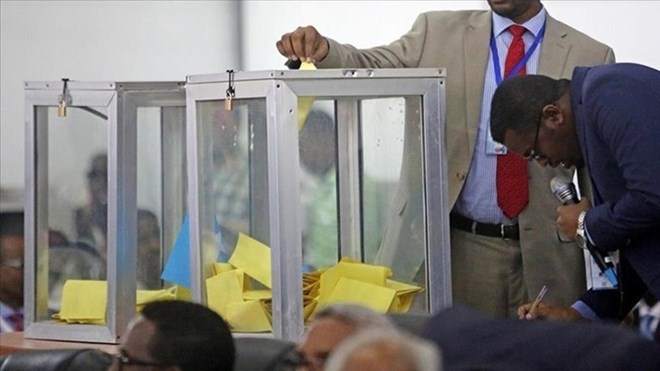Share the post "Turkey’s Best Drones Are Being Shot Down Over Middle East And Africa.."
March 2025 is undoubtedly the worst month to date for Turkey’s indigenous Bayraktar Akinci drone, with at least two going down in Africa and the Middle East within a mere two weeks under different circumstances.
Overnight, on March 31 and April 1, a drone fell out of the sky over the rural Tinzaouaten commune in northeast Mali, an area where the Malian military is fighting armed groups on the country’s border with Algeria. Fighters from the Azawad Liberation Front rushed to the crash site and photographed the wreckage extensively.
Algeria claimed it shot down an “armed surveillance drone” that had violated its airspace near Tinzaouaten. Mali merely confirmed that one of its drones crashed in the area while on a surveillance mission, adding that it was investigating the incident. Regardless of whether it was shot down or crashed due to a malfunction, the incident is embarrassing for Bamako, given that it has received only two Akinci drones from Turkey delivered in 2024.
It also may raise concerns in Ankara since it came a mere two weeks after an Akinci drone in Turkish service crashed in Iraqi Kurdistan on March 16. Turkey’s arch enemy, the armed Kurdish PKK group, released a video showing its forces targeting and bringing down that drone. Over the past year, reports indicate that the PKK may have acquired Iranian-made loitering missiles, explosive drones with optical sensors and infrared proximity fuses that loiter around a designated area searching for enemy drones.
Whatever the PKK is using, it has proven capable of downing an increasing number of Turkish-made drones over the past year.
The same goes for the Kurdish-led Syrian Democratic Forces in neighboring Syria. Since late 2024, several incidents indicate that the SDF has acquired or developed anti-drone capabilities. The group has brought down Turkish Bayraktar TB2, Aksungur, and Anka drones. It even accidentally shot down an American MQ-9 Reaper drone that it misidentified as a threat.
Those Turkish drones downed over northeast Syria are all medium-altitude, long-endurance, or MALE, combat drones. The TB2, in particular, is a cost-effective drone that can endure significant attrition over the battlefield. On the other hand, the Akinci is a high-altitude, long-endurance, or HALE, drone that has much more advanced sensors, a much heavier payload, and can carry more extensive and advanced munitions and weaponry, including air-launched ballistic missiles. It can also fire air-to-air missiles.
Drones like the TB2 are more comparable with the American MQ-1 Predator. The Akinci is more in league with the MQ-9 Reaper, given its larger size, more sophisticated weaponry, and superior sensors and surveillance capabilities. It, therefore, outclasses its predecessors as both a combat and surveillance drone.
Its latter capabilities were dramatically demonstrated when a single Akinci entered Iranian airspace on the night of May 19, 2024, searching for the crashed helicopter of Iranian President Ebrahim Raisi. The drone used its thermal technology and other powerful sensors to scan the mountainous terrain where the helicopter went down amid pitch darkness and adverse weather conditions.
While its higher price tag might not win the Akinci as many export deals as the TB2, the most widely exported drone type worldwide, Ankara has already signed export agreements with at least 11 countries for the more advanced drone. These recent losses over Iraq Kurdistan and Mali may be bad news from a sales perspective.
If the Algerian Air Force shot down Mali’s Akinci rather than a separatist group, which seems most likely, that would prove less damaging to the drone’s overall reputation. After all, most drones would stand little to no chance up against high-performance fighter jets armed with beyond-visual range air-to-air missiles, or advanced surface-to- air missiles. For example, Iran shot down an American RQ-4A Global Hawk surveillance drone capable of operating at altitudes of 65,000 feet with its 3rd Khordad medium-range air defense system over the Strait of Hormuz in June 2019. Of course, non-state actors do not possess such systems.
While the Akinci is also a HALE drone with a purported maximum altitude of 45,118 feet, the two that went down over Mali and Iraqi Kurdistan probably flew at much lower altitudes, thus making them more vulnerable to loitering or possibly even shoulder-fired missiles. The Houthis in Yemen have successfully used Iranian-made loitering missiles against American Reapers, bringing down a significant number in recent months.
African countries acquiring the Akinci are doing so for use against militias but buying them in far fewer numbers than they would, or even could, the TB2. Therefore, losses are immediately more significant and costly when they do happen. For example, the downing of Mali’s Akinci immediately constituted the loss of 50 percent of Bamako’s tiny fleet.
Turkey also delivered two Akinci drones to Somalia in March to support Mogadishu’s fight against the notorious Al-Shabaab group. If either of these is shot down, especially by those militants, that could bode ill for future sales in ways that combat losses of the cheaper and more ubiquitous TB2, the 500th unit of which rolled off its assembly line in June 2023, have not.
Turkish drone losses in the Middle East in recent months were not insignificant, especially considering the losses spanned at least four indigenous drone types. However, the loss of two Akincis in two weeks is arguably more significant since it is the most advanced drone Ankara has put into active service and sold abroad to date.




